Common Facts about Hydrangeas
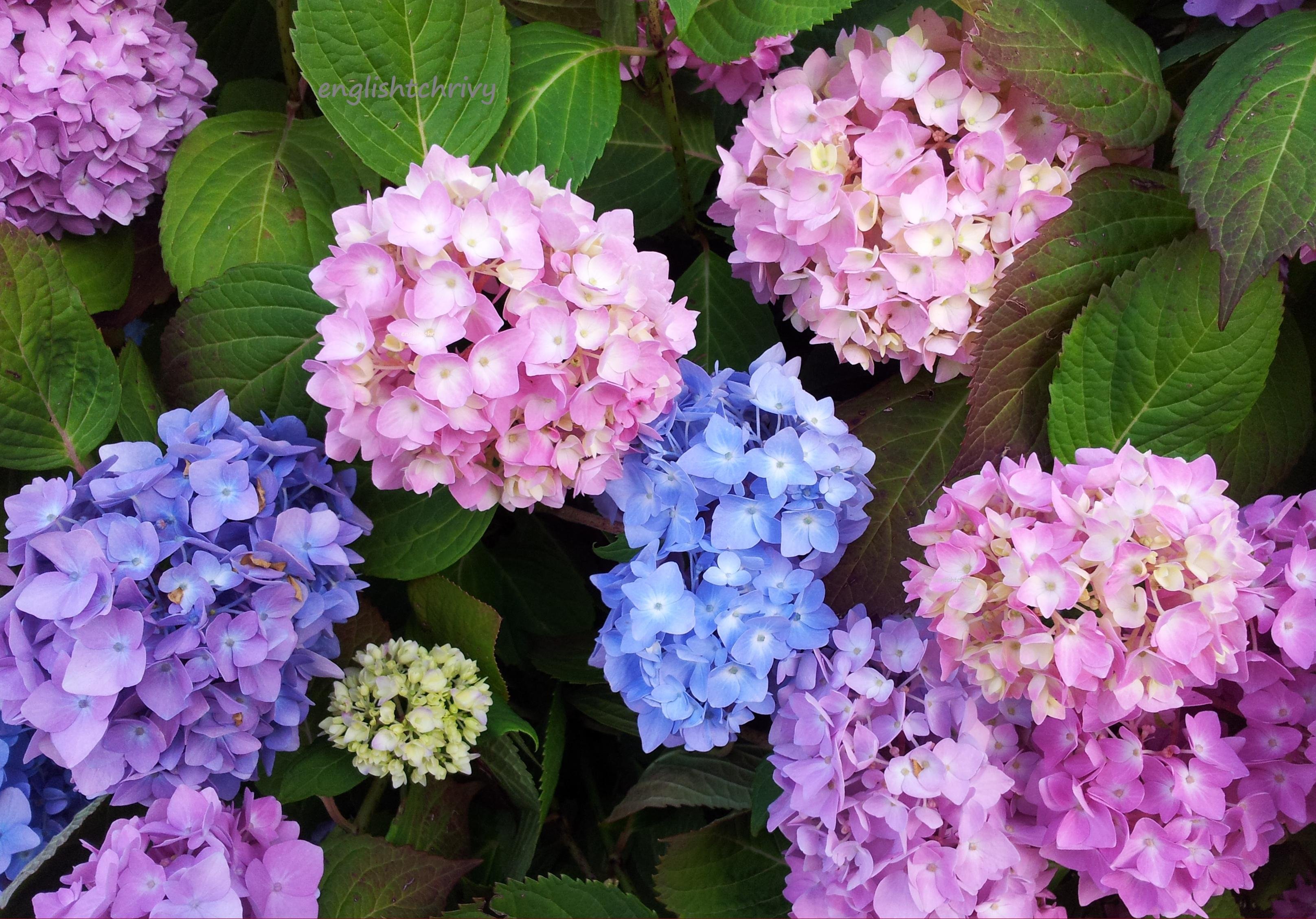
Hydrangea macrophylla 'Semperflorens"
Soil:
They love rich, medium moist and well drained soil. Loam soil and sand are the best choices. They could grow in pots, containers, hedges as long as the soil needs are met.
They love composts so I normally separate the vegetable peels, blitz them in the food processor and add it to the water for them in summer.
Diseases:
Bud blight, bacterial wilt, leaf spot and mildew. Some aphids get lost and mostly shelled snails - specially teeny tiny ones gnaw and hide under their leaves. In rainy seasons, I look like I'm harvesting escargo. If I don't, they big ones tend to suck the sap out of the branches at the bottom.
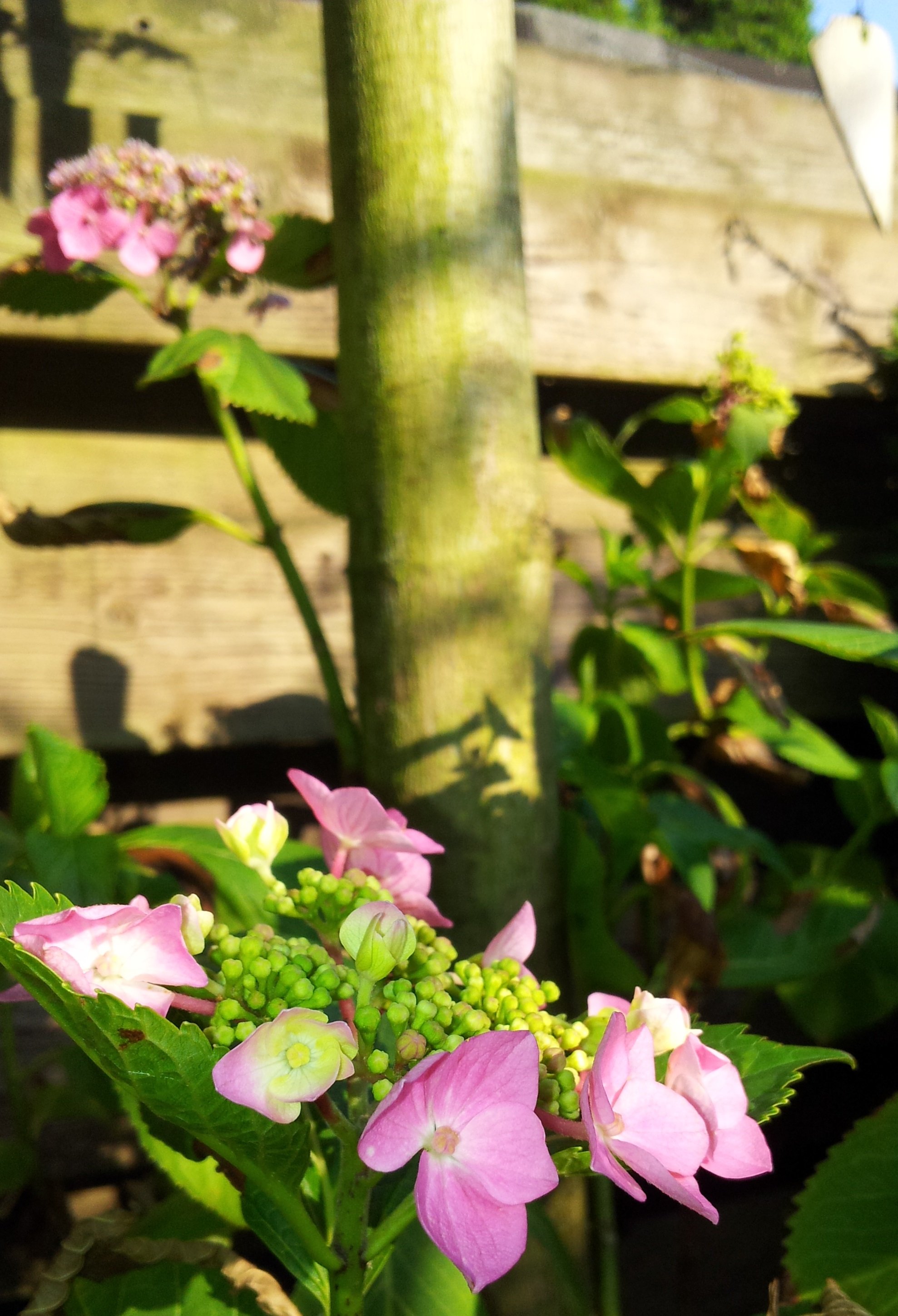
Hydrangea macrophylla 'Libelle
Bloom Time:
Some start in summer, some in late summer, and some during early fall. Since all of these hydrangeas bloom almost consecutively, our front yard is such an eye catcher to some who parks in front of our house.
It's not common for people to get nosey and take pictures of other people's plant here, but some just couldn't help it. Can you blame them? I even do, too. So from July to late September a shopper to the grocery next to our house would first drop by take a few snap shots specially of these Hydrangea macrophylla 'Semperflorens".
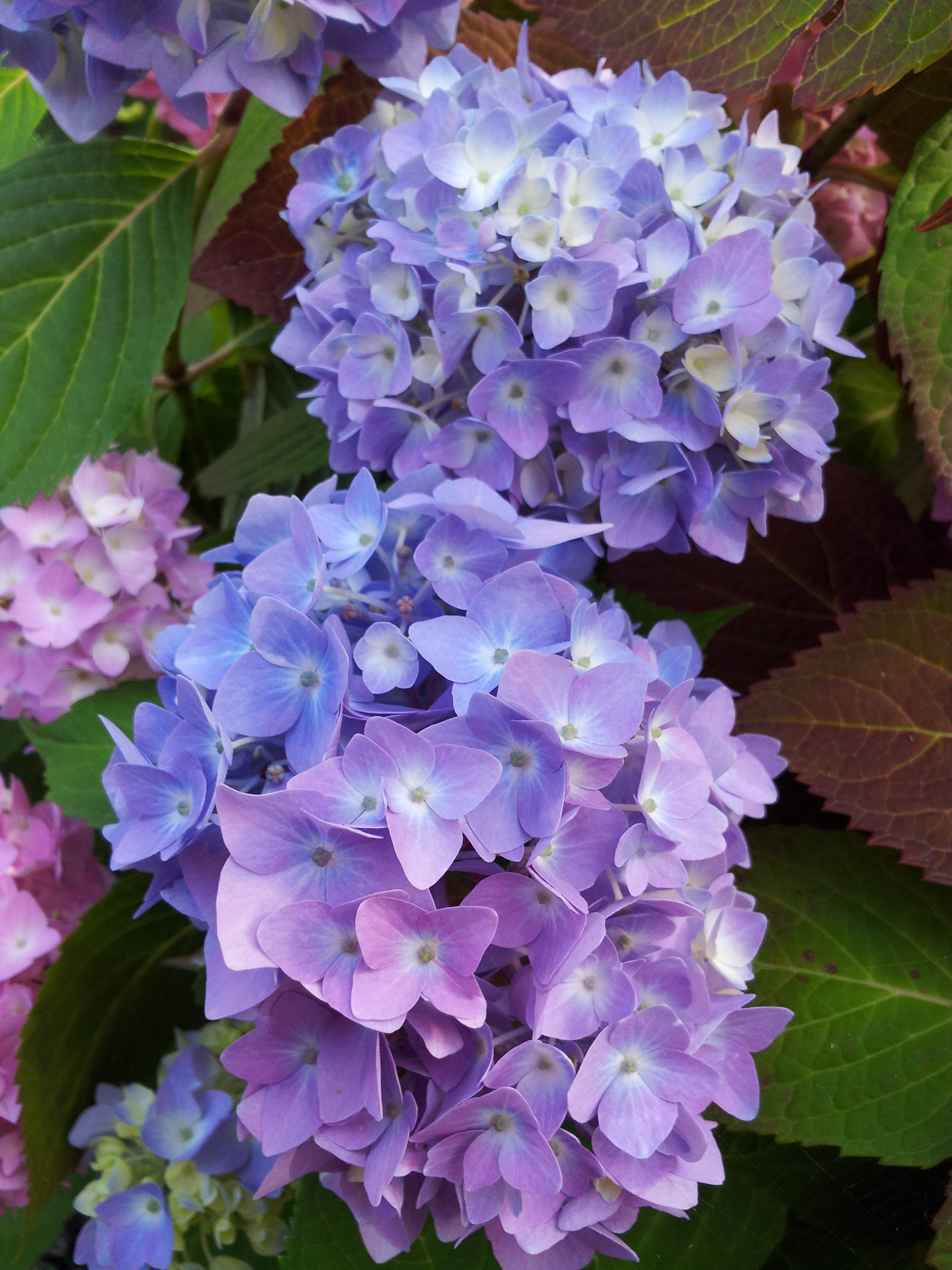
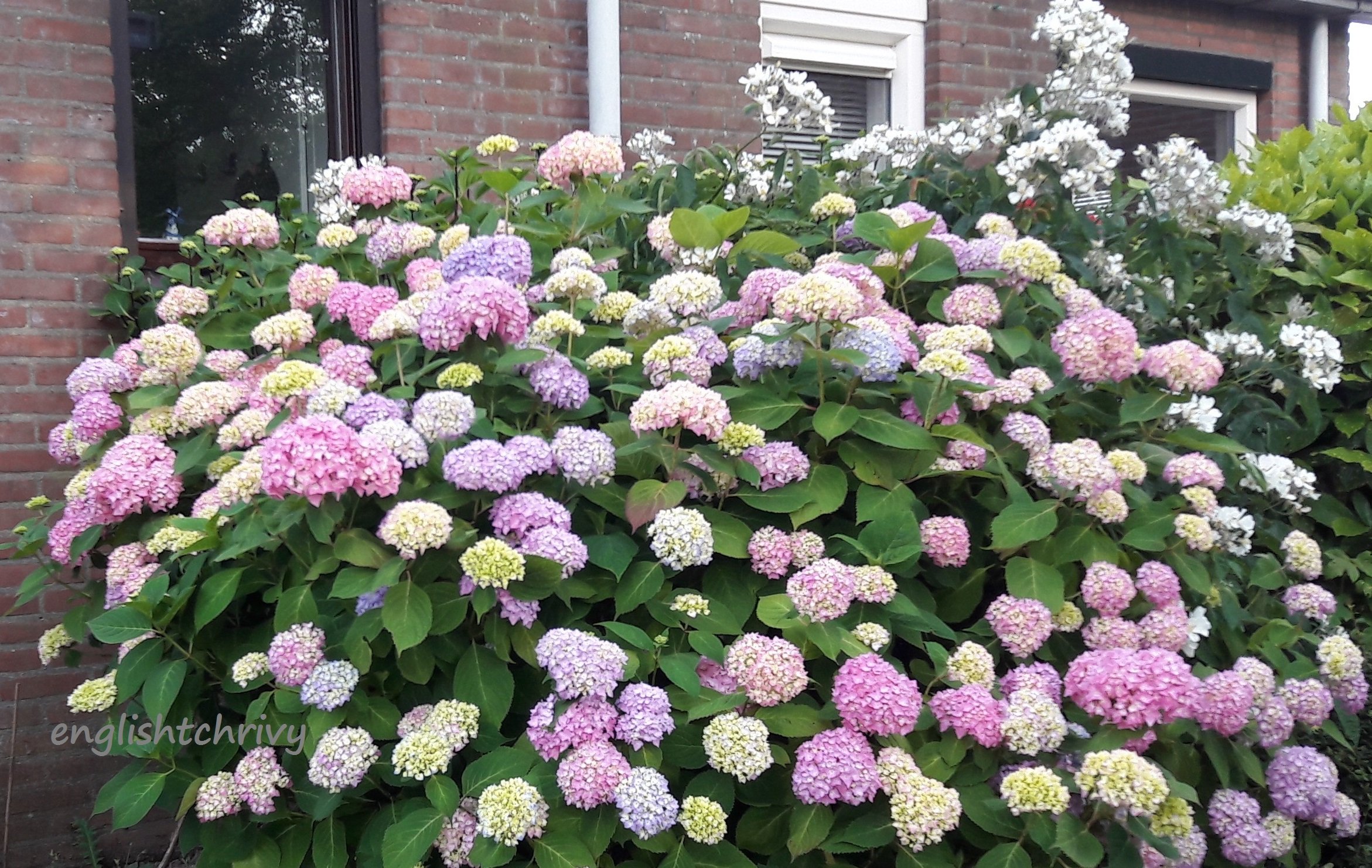
This was in July this year. We had to trim them way back down. Many of them broke when it hailed some time this July and rained like crazy for days that those pompom flowers got too wet and heavy they bowed and eventually broke.
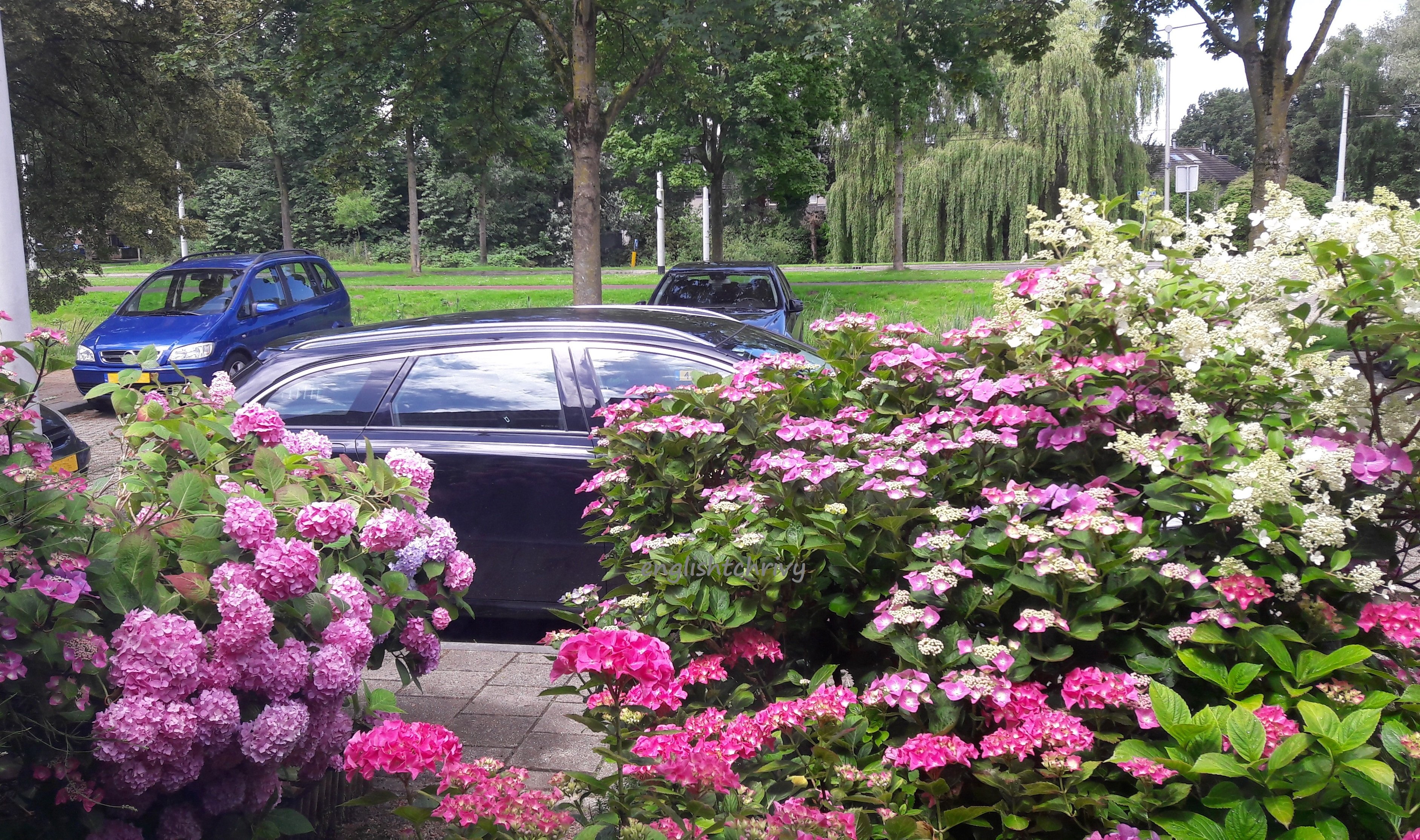
Pruning:
The best time is - immediately. We cut the old, browned and dried flowers before they sprout on stalks. Cutting the new stalks would mean no flowers for the next year since the new stalks carry the buds.
Although most of them would love being placed in the full sun, some of them love being under partial sun like this Hydrangea macrophylla 'Tovelit'.
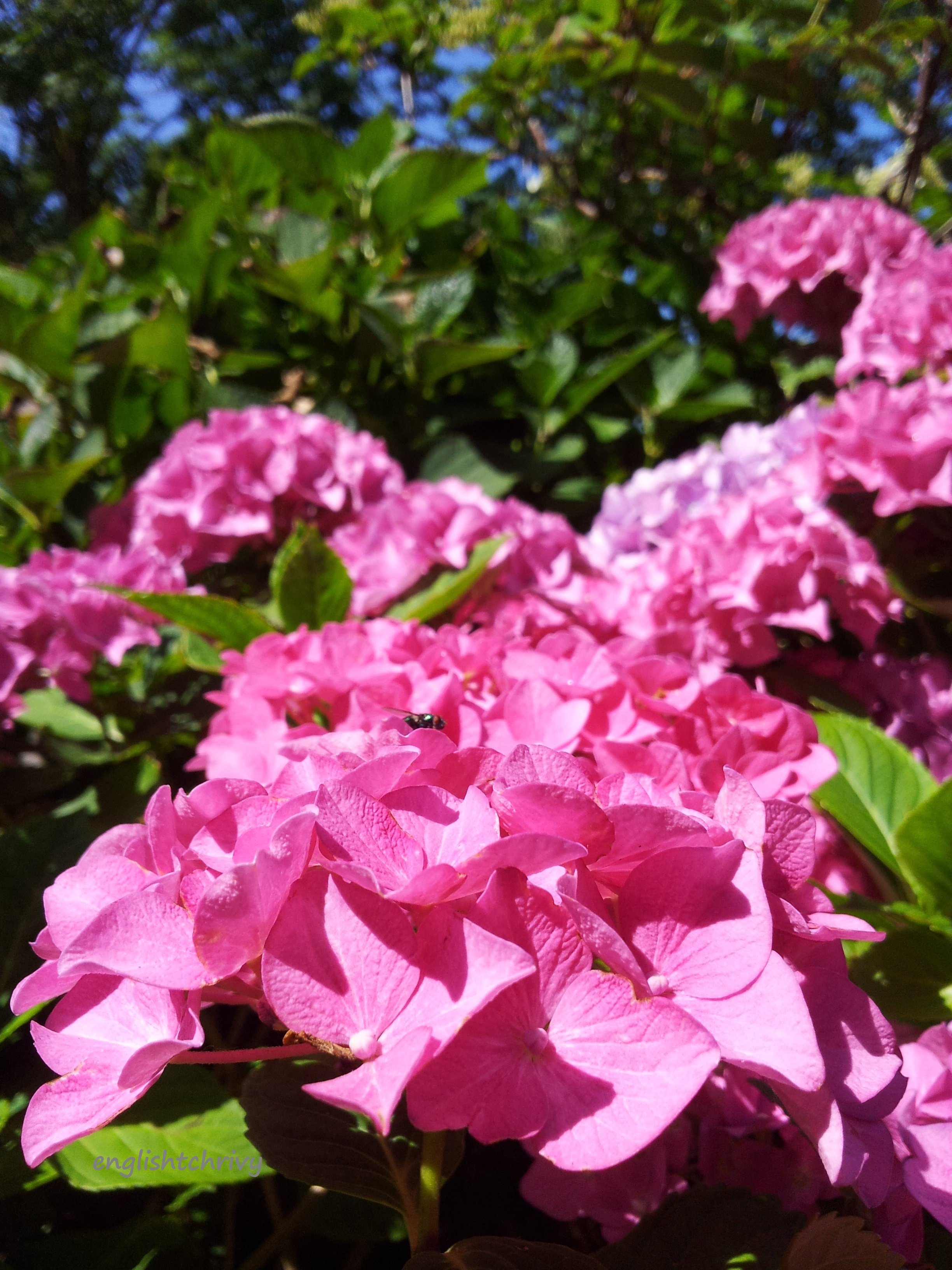
We put them close to the window in the front yard so the Hydrangea Macrophylla 'Taube' could serve as their shade cause they actually prefer partial than full sun. When it gets too hot, hrydrangeas could easily get scorched. This was what happened after three consecutive days of hot summer sun shine ranging from 28 to 33 last year. They were fried when it hit 37 degree celsius.
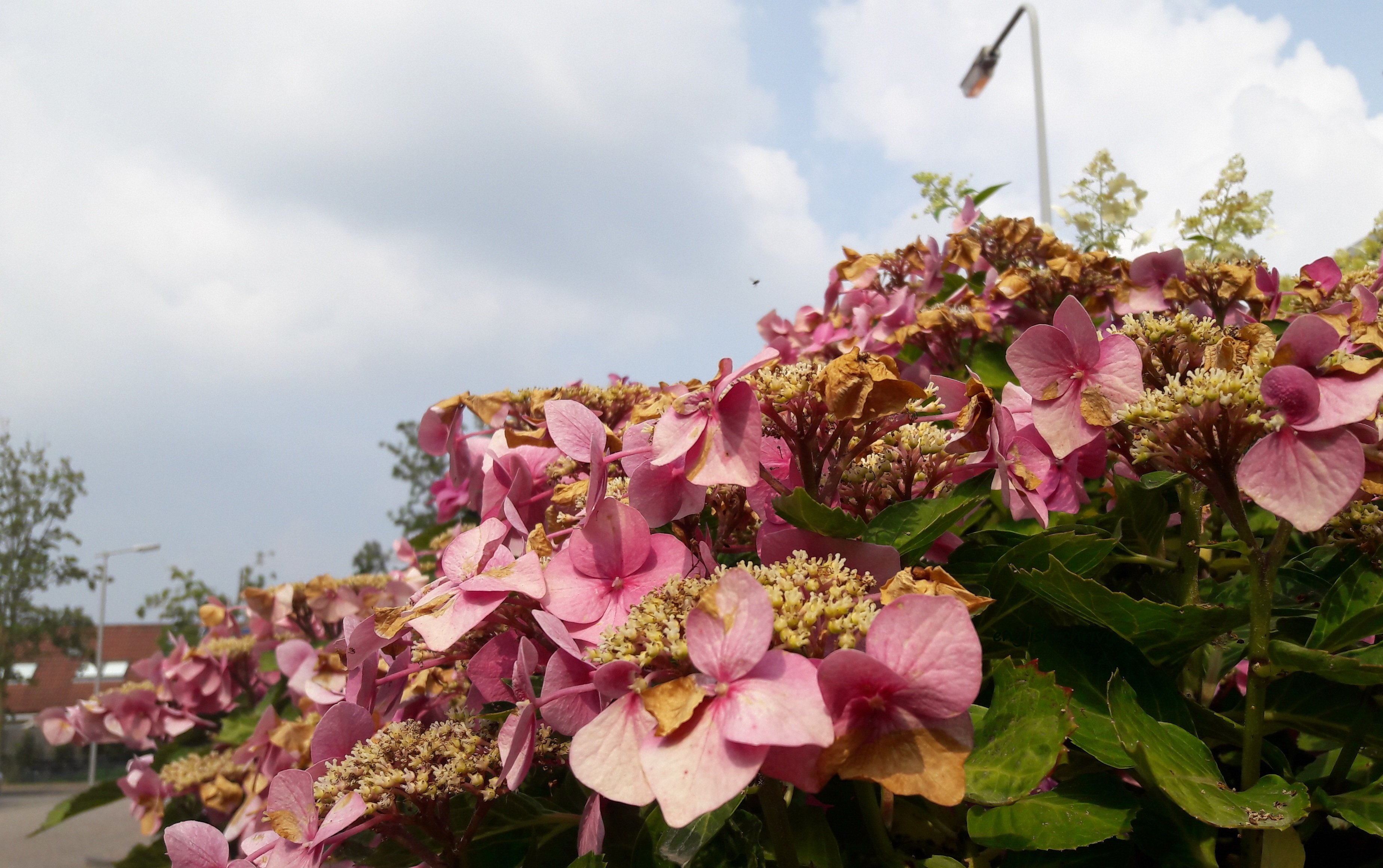
Not all of them are winter hard so you'd better know which one is. The ones we have have survived hard winters for years so they all are.
What makes the hydrangea turn blue?
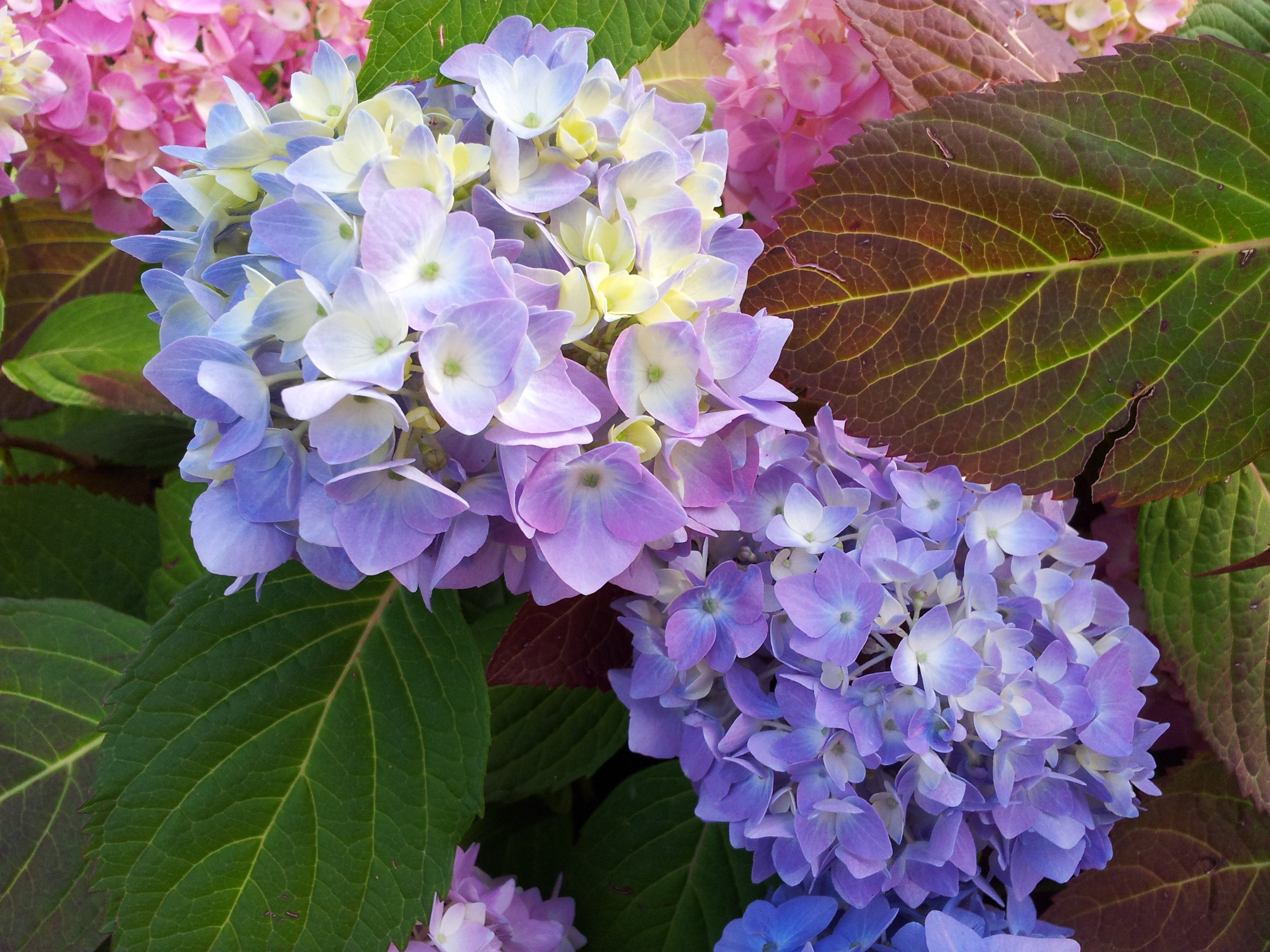
The Hydrangea macrophylla 'Semperflorens" that we have must actually be purely pink. However, since it is so near the concrete sidewalk, concrete contains lime and that could turn the hydrangeas near them into blue when the soil gets contaminated with it.
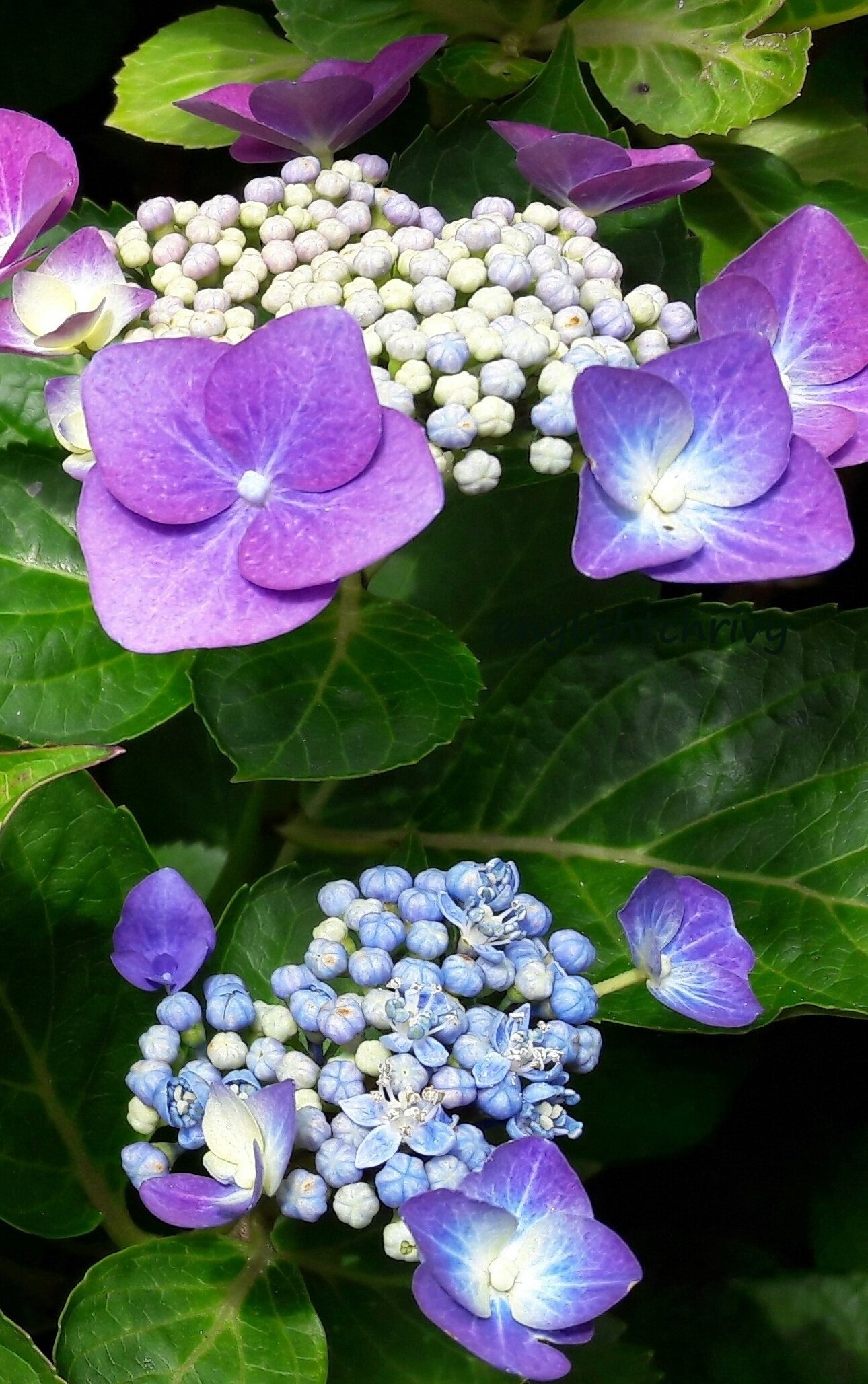
Hydrangea macrophylla 'Taube' Teller Pink
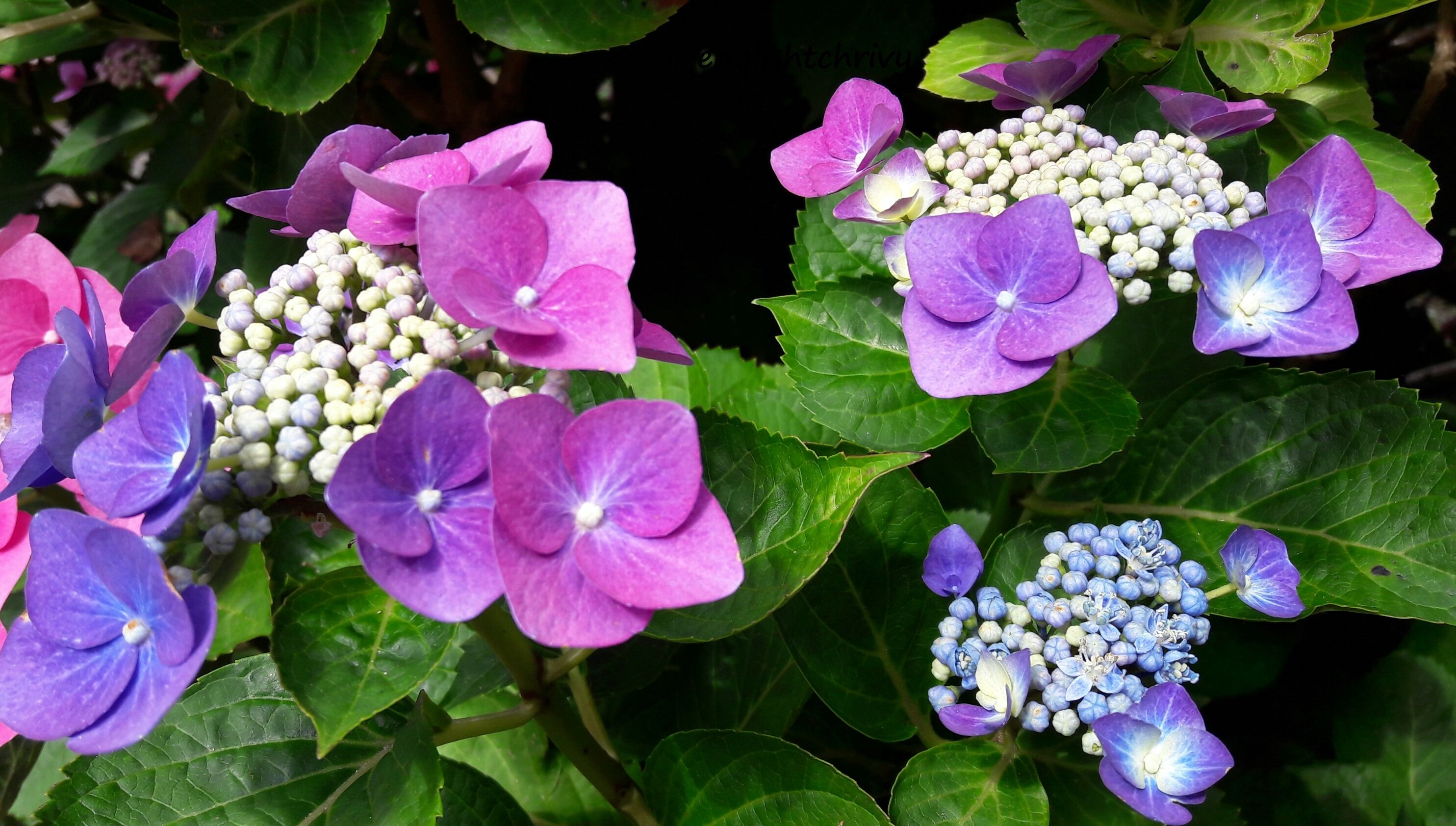
Another trick I use is - putting crushed egg shells (washed) in the soil. I'm half a vegetarian so most of my protein come from eggs. Instead of throwing the eggshells I washed them and powder them using a knead. It's quite a work but if you get used to it you can use those egg shells to combat snails and that's how I found out that they actually could turn pink hydrangeas to blue just like what they did to these Hydrangea macrophylla 'Taube' Teller Pink.
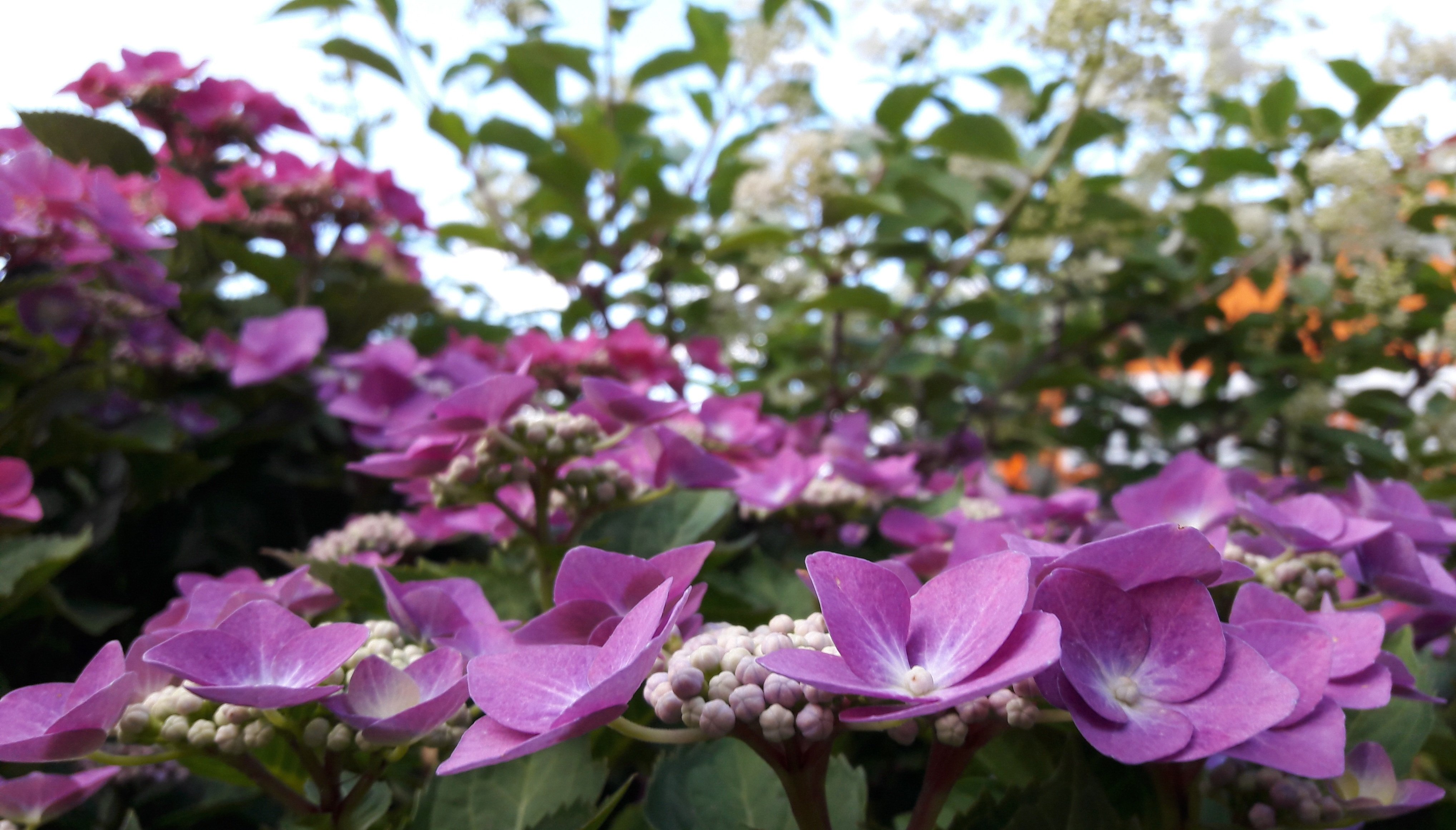
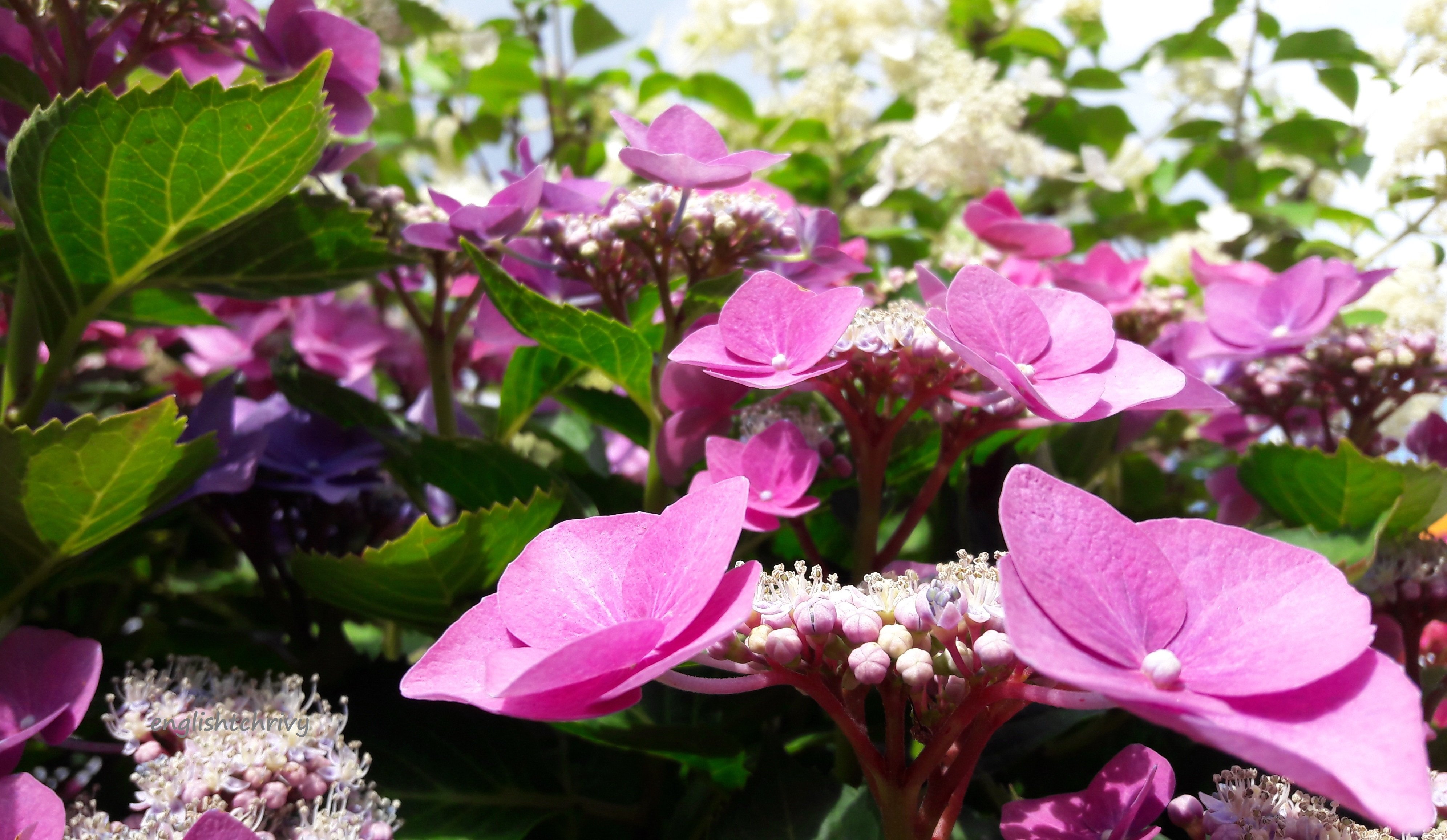
Yes, they were originally pink.
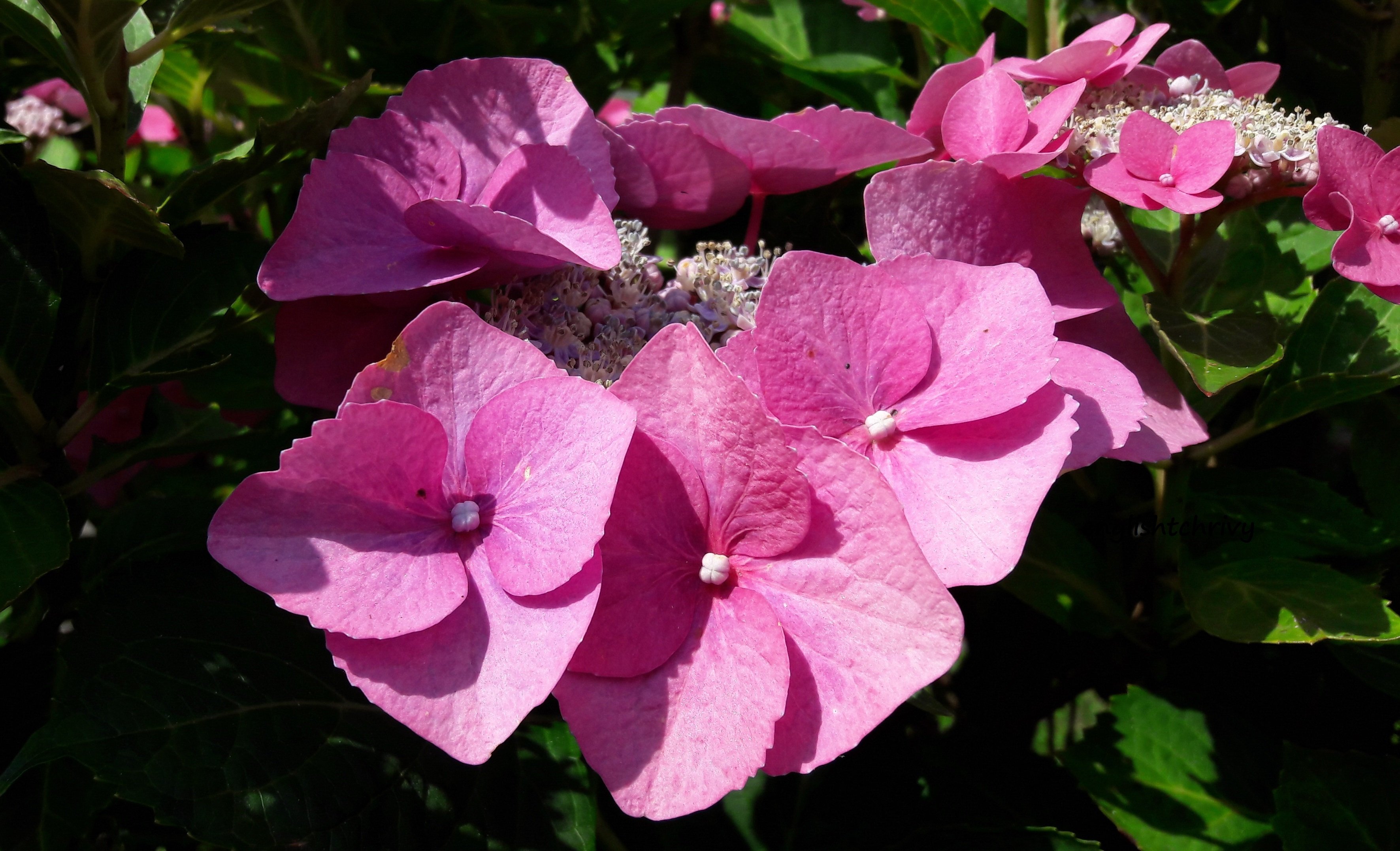
I just spread the egg shell on the soil around them and they first turned red violet and later bluish. By tweaking the soil to a ph of at least 5.5 - which is very acidic would do the trick. You will have to take another plant beside it in consideration though.
Some plants like the Rhododendron can't thrive on acidic soil. I have one that used to be between two Hydrangea macrophylla 'Taube' Teller Pink - it still is alive but hasn't grown bushy and bear teeny tiny flowers. I moved it and hopefully it performs better next year.
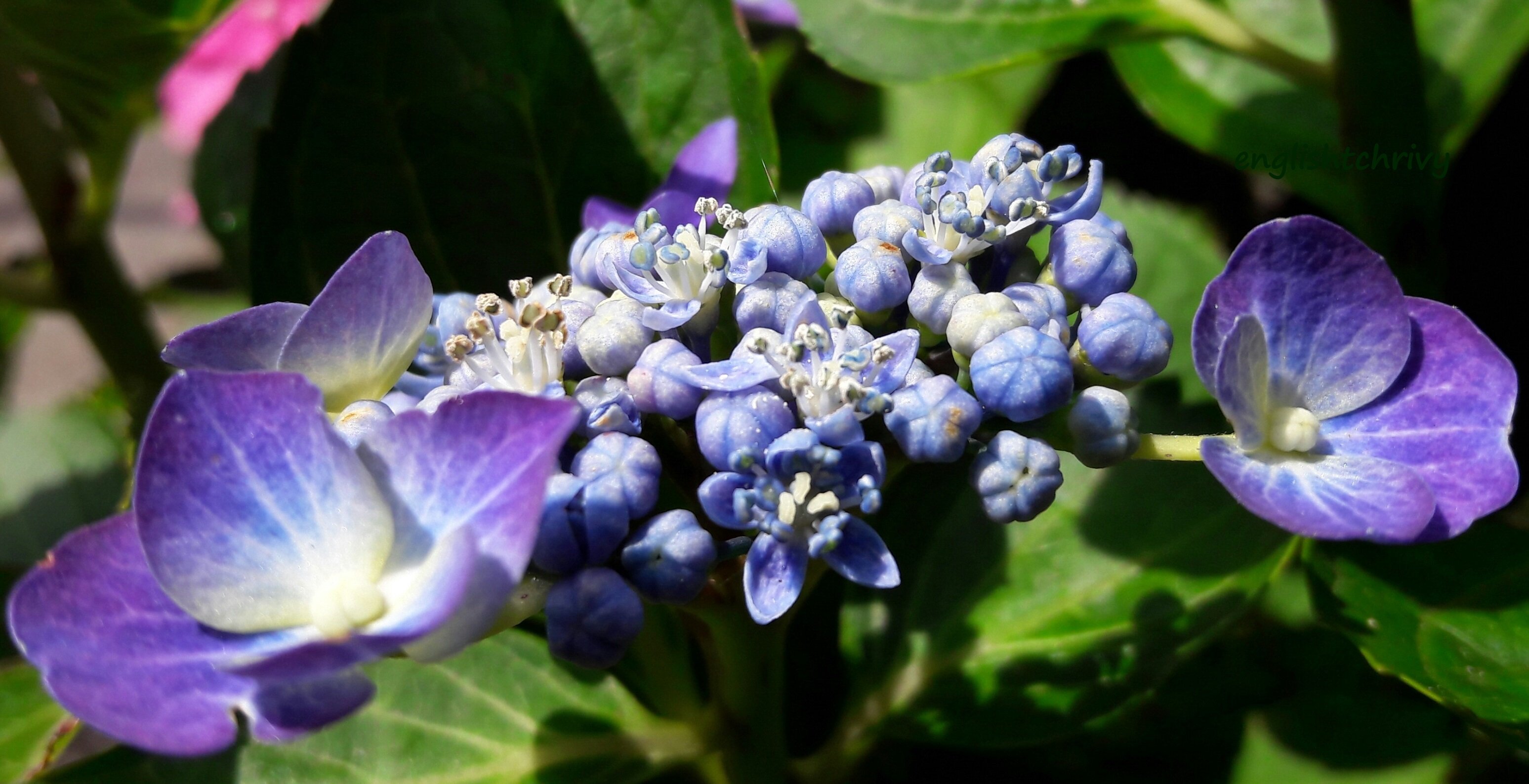
I also tried it with this Hydrangea macrophylla 'First White' but it didn't work. Somehow, when the flowers have almost wilted, their edges turned a bit reddish.
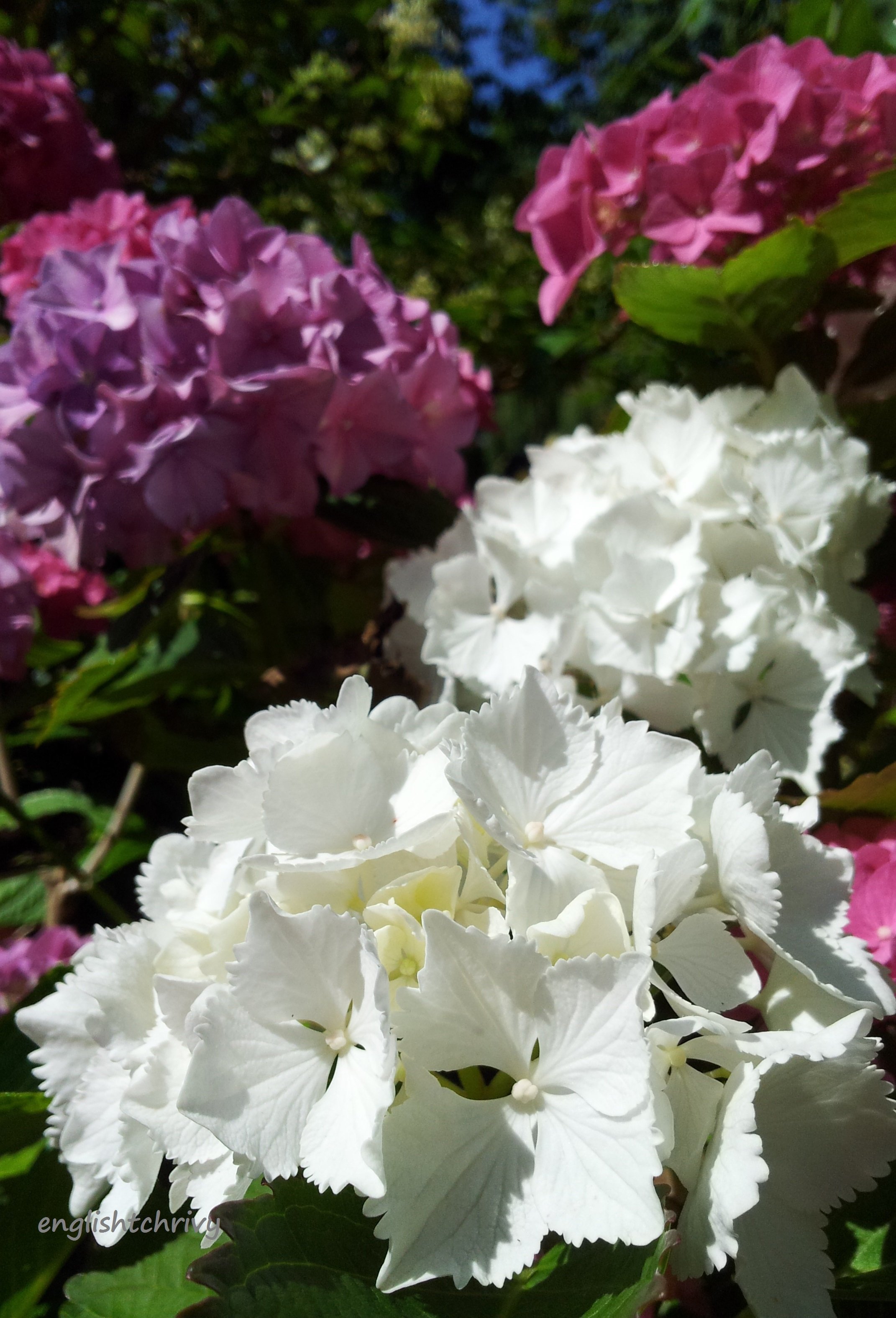
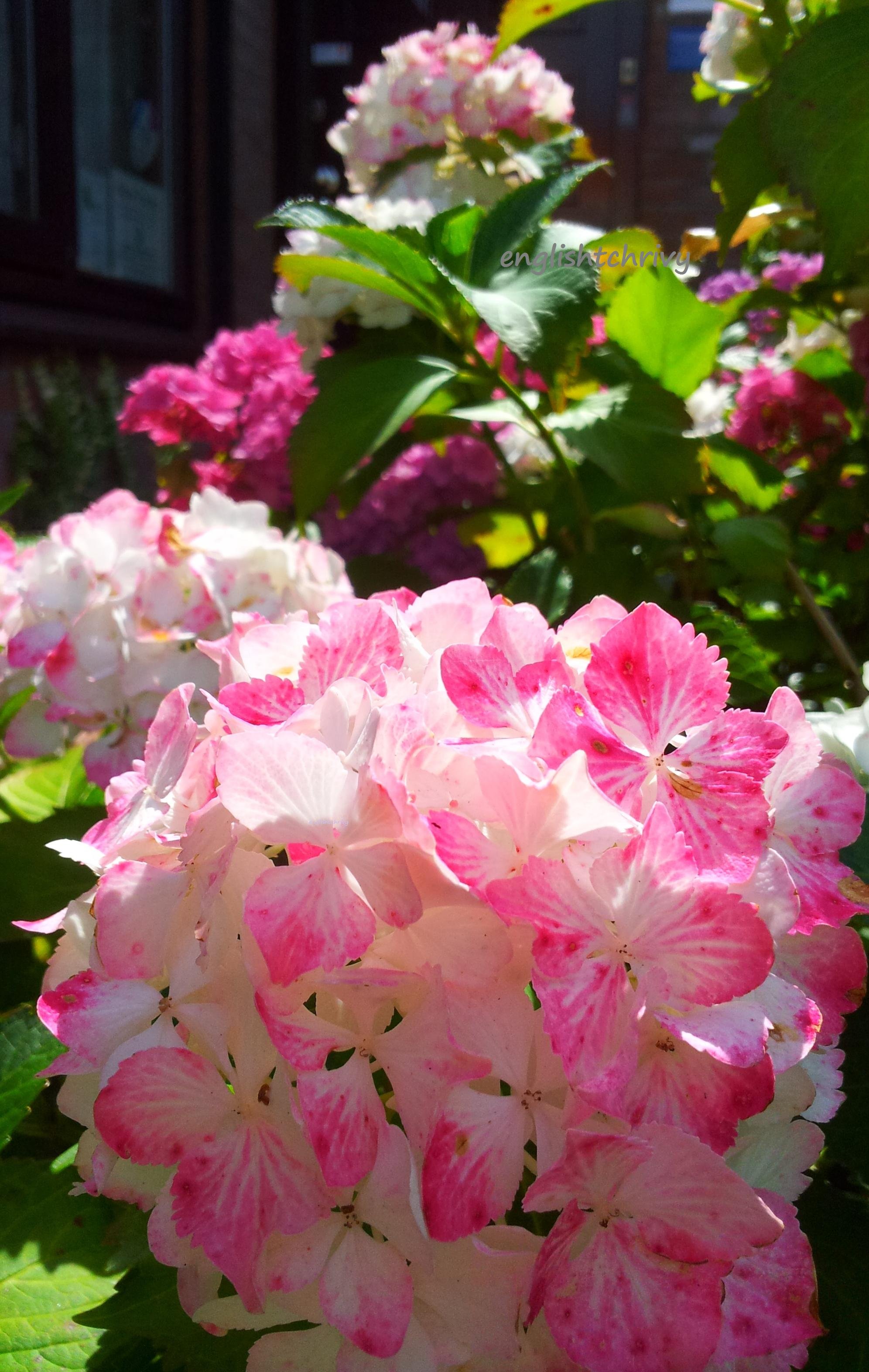
There's one more hydrangea in the middle which I featured in this post. The white ones with cone like florets. They are my favorites cause they really attract bumble bees and they sometimes conduct a buzzing party in the garden. The very reason I
made sure both the front and the back garden have flowers for them to feast on.
There are two other hydrangeas that I would really want to acquire. The Hydrangea macrophylla 'Ayesha' and the Hydrangea arborescens 'Grandiflora' . Someday .. someday.. when I get to score an organic one in an organic plant shop near here. They always go out of stock and sell out pretty fast because they really are so beautiful.
Have you got hydrangeas in your garden? Which one?
I took some of these pictures with my Samsung Galaxy A3 2016 edition and some with my Samsung Galaxy Note 1.
Here are my other gardening articles:
- Am Blue
- Edible Allium Cepa
- An Open Notes Gardening Quiz on Some Flowers That Look Alike
- Echinacea
- Boraginaceae
- Borage ...
- How 'bout Having Some Love - In - A - Mist in Your Garden ?
- Pluck 'Em Not
- Grow Your Own Tropical Mangoes in Western Europe and Other Countries with Hard Winters
- Grow Your Own Citrus Plant in Pots in Your Own Backyard or Veranda and Even Indoors in Cold Countries
- How and Which Tropical Plants Can You Actually Grow in Cold Countries
- My Log in Growing My Own Moringa Plant Indoors in A Cold Country, Half a Year Later
- Garden Hacks : On Propagating Sweet Potato Plants
- Gardening Hacks : On Planting Tomatoes and Other Nightshade Plants
- Follow My Experiment Log on Planting Chestnuts and Walnuts From Seeds
- Gardening Hacks : Basic Tips in Growing Cacti Indoors
- Which Cactus Is This?
- Tips on Propagating Succulents Like Echeverias
- Flowers That Are Still In Bloom in Late Autumn, 2016
- Firethorns in Autumn
- Mispel or The Medlar Fruit
